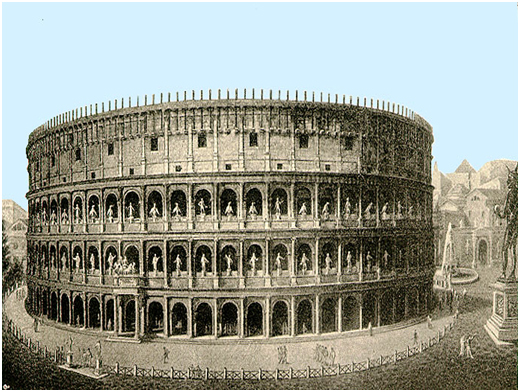Conquest of Carthage and the mid-eastern tribes transformed Rome into a fledgling empire. During the later part of the 2nd century BC, rapid political and territorial expansion, capture of large numbers of slave labor and the prevalence of widespread opportunities for corruption and fraud in the newly acquired provinces and colonies began revealing a broadening and foreboding pall of political and class unrest and revolt.
Mismanagement of the new Spanish provinces along with its social reactions was a source of constant conflict for two centuries. Roman General Sertorius attempted to take advantage of this continuous turmoil by leading a civil war against city of Rome. Complete subjugation of Hispania (Spanish, Gauls) wouldn’t be achieved until the reign Octavio (Augustus) and after centuries of bloody fighting.
The Carthagian victories yielded 75,000 prisoners and the eastern conquests produced 150,000 from the province of Epirus alone. Initially, the Romans benefited from this cheap labor. The prevalence of slavery, however, led to a new aristocracy. The plantations of Sicily were heavily supported by cheap (slave) labor. A Syrian slave by the name of Enus led a 3 year revolt. The slave army grew to 70,000 in number during the revolt. The rebellion was eventually suppressed by General Flacchus and his Legions who vanquished 20,000 of the slaves in its suppression.
In the east, King Ahalus III of Pergamum died in 133 BC without heirs. As a longtime friend of Rome, he willed his entire nation of Pergamum to The Roman Republic which included Lydia, Pisdia, lycaonia and Pamphylia. By 129 BC, the entire region would be annexed as the province of Asia Minor. Pergamum would become one of the most famous cities in Asia Minor.
The wealth imported from the newly won provinces gave rise to strong, political movements for equal rights for Italian tribes as Latins. (You may recall in a number of Roman victories the Roman Senate determined by detailed alliances and treaties for each tribe, colony, city, and province which rights would be granted to each unit and which would not). The load in military duty was equally shared among the tribes, but equal rights in voting were not one of the rights granted. It was the patricians (elites) who benefitted the most through these vast acquisitions. The age-old battle between the patricians and plebeians was soon to be renewed. The machinations of the Gracchi brothers and the political scheming of others in search of State control would lead to the collapse of the Republican system.
Colleseum

|

